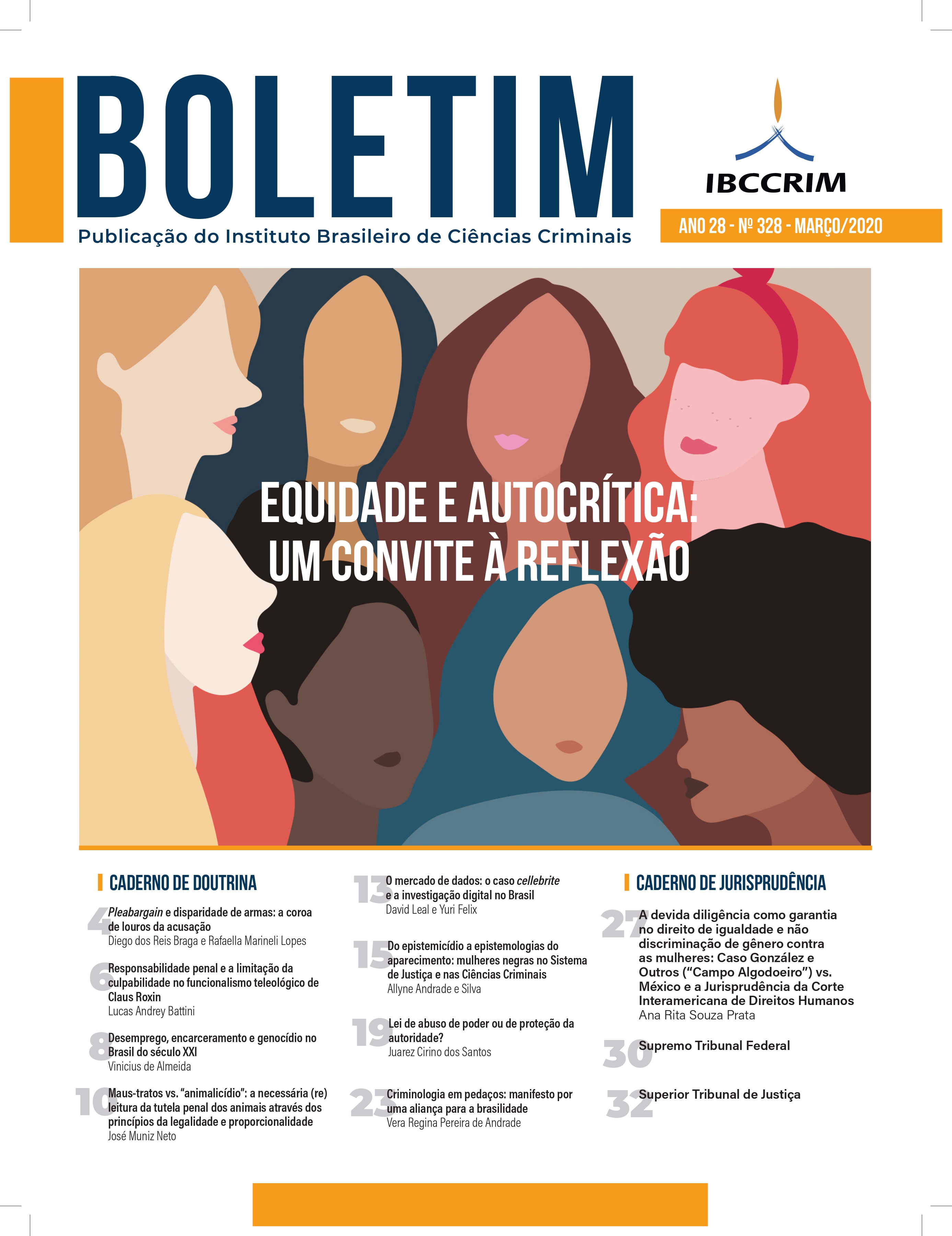Mistreatment vs. “Animalicídio”: the necessary (re) reading of the penal guardianship of animals through the principles of legality and proportionality
Views: 110Keywords:
Animals, Mistreatment, Animalicide, PrinciplesAbstract
Criminal law is presented, every day, new realities, new interests that seek protection space through this legal area. With the guardianship of animals is no different. In spite of movements in other areas of law aimed at protecting these living beings, the need for criminal intervention when violating animals is discussed. This analysis stems, first of all, from a necessary philosophical discussion about the human-animal relationship and how it manifests itself, either in the interest of humans or in a valuative equation of the interests of these two living beings. However, all this assessment of the protection of animals through criminal law, in the current state of the art, needs to be seen in accordance with the present order and the principles embodied in it, as a way of guaranteeing the respect not only of these living beings, but also of those who are subject to criminal prosecution.
Downloads
Publication Facts
Reviewer profiles N/A
Author statements
- Academic society
- Instituto Brasileiro de Ciências Criminais
- Publisher
- IBCCRIM
References
BITENCOURT, Cezar Roberto. Tratado de direito penal: parte geral. 24. ed. São Paulo: Saraiva Educação, 2018. p. 67-68
BRITO, Teresa Quintela de. Os crimes de maus-tratos e de abandono de animais de companhia: Direito penal simbólico? CEDOUA - Coimbra, a. 19, n. 38, p. 9-22, 2016.
GRECO, Luís. Proteção de bens jurídicos e crueldade com animais. Revista Liberdades, n. 03, p. 47-59, jan.-abr. 2010.
GRECO, Rogério. Curso de direito penal: parte geral. v. 1., 19. ed. Rio de Janeiro: Impetus, 2017. p. 173 e ss.
JESUS, Damásio de. Direito penal: parte geral. v. 1, 35. ed. São Paulo: Saraiva, 2014. p. 51;
LOPES JR, Aury. Teoria geral do processo é danosa para a boa saúde do processo penal. Consultor Jurídico. 2014. Disponível em: <https://www.conjur.com.br/2014-jun-27/teoria-geral-processo-danosa-boa-saude-processo-penal>. Acesso em: 27 out. 2018.
MAIA, Ana. Tribunal condena homem acusado de enforcar gata. Jornal Público. 17 mai. 2018. Disponível em: <https://www.publico.pt/2018/05/17/sociedade/noticia/tribunal-condena-homem-acusado-de-enforcar-gata-1830429>. Acesso em: 12 dez. 2018.
MIR PUIG, Santiago. O princípio da proporcionalidade enquanto fundamento constitucional de limites materiais do direito penal. Revista Portuguesa de Ciência Criminal, a. 19, n. 1, p. 7-38, jan.-mar. 2009.
NUCCI, Guilherme de Souza. Curso de direito penal: parte geral: arts. 1º a 120 do Código Penal. Rio de Janeiro: Forense, 2017. p. 129-131. PACELLI, Eugênio. Manual de direito penal: parte geral, 2. ed., rev. e atual. São Paulo: Atlas, 2016. p. 91-92 (livro eletrônico);
PALMA, Maria Fernanda. Direito penal: parte geral: a teoria da infração como teoria da decisão penal, 3. ed. Lisboa: AAFDL, 2017. p. 82 e ss.
PRADO, Luiz Regis. Direito penal do ambiente. 6. ed. São Paulo: Revista dos Tribunais, 2016. p. 214 e ss.;.
RIVA, Carlo Ruga. A tutela penal dos animais no ordenamento jurídico italiano: dos cães que amam os seres humanos às lagostas que odeiam ficar no frigorífico - The use of criminal law for the animal protection in Italy: from the dogs that love humans to the lobsters who hate the refrigerator. Anatomia do crime, Coimbra, n. 4, p. 133-146, jul.-dez. 2016.
STRECK, Lenio Luiz. Verdade e consenso: Constituição, hermenêutica e teorias discursivas. Rio de Janeiro: Lumen Juris, 2006. p. 64.
WALDMAN, Maurício. Meio ambiente & antropologia. São Paulo: Senac São Paulo, 2006. p. 41-42.
Downloads
Published
How to Cite
Issue
Section
License
Copyright of published articles belongs to the author, but with journal rights over the first publication and respecting the one-year exclusivity period. Authors may only use the same results in other publications by clearly indicating this journal as the medium of the original publication. If there is no such indication, it will be considered a situation of self-plagiarism.
Therefore, the reproduction, total or partial, of the articles published here is subject to the express mention of the origin of its publication in this journal, citing the volume and number of this publication. For legal purposes, the source of the original publication must be consigned, in addition to the DOI link for cross-reference (if any).


 Português (Brasil)
Português (Brasil)
 English
English
 Español (España)
Español (España)






